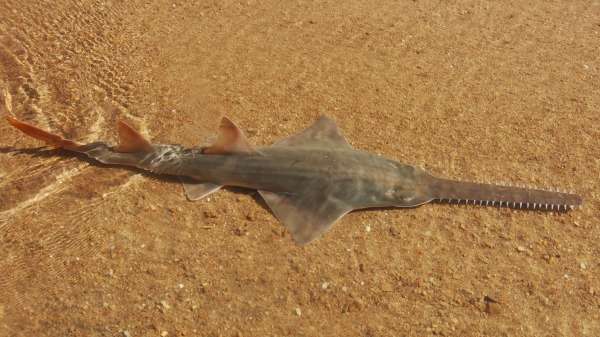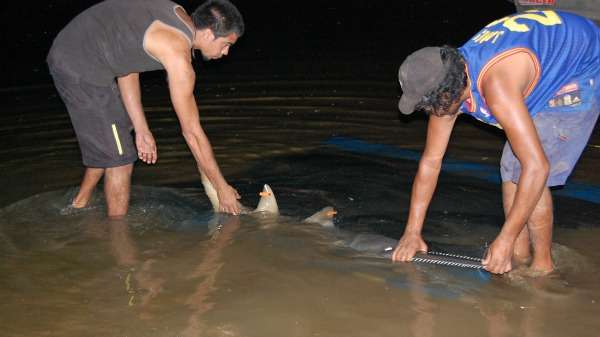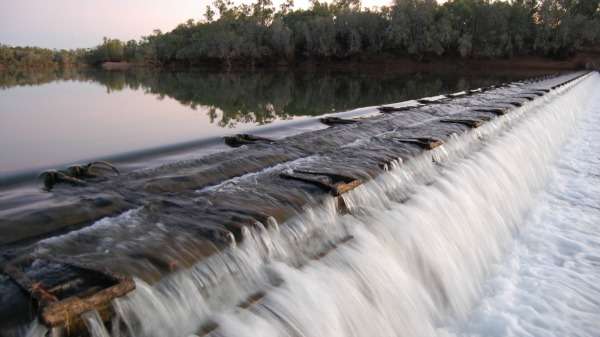'Trap and haul' program suggested to save endangered sawfish

The Kimberley's Fitzroy River seems to be the world's capital for the iconic freshwater sawfish (Pristis pristis) whose distinctive "saws" adorn many a study wall and trophy cabinet.
The river and adjacent King Sound may contain the most important nurseries worldwide for the endangered freshwater sawfish and dwarf sawfish (Pristis clavata), according to a study involving the Murdoch University Freshwater Fish Group and Nyikina-Mangala Rangers.
But it found the fish's survival is hampered by human-made barriers which restrict its movements.
More than 95 per cent of adult P. pristis caught in the northwest had come from the Fitzroy River, while more than 84 per cent of P. clavata came from King Sound.
Sawfish species worldwide have declined due to overfishing and habitat damage, and significant breeding populations of these species have not been found elsewhere.
The study found two artificial barriers, the Myroodah Crossing and The Barrage near Camballin, meant the sawfish could not travel up and down the river as required during dry years.
Researchers describe female sawfish as being "philopatric", as they returned from the open ocean to give birth near the mouths of the rivers they were born in while the young sawfish, or pups, then swim upstream to feed and grow.Water levels were too low in the 2012-15 droughts to allow many sawfish to pass these barriers, and few if any survived.

However, sawfish born in the heavy-rainfall wet season of 2010-11 are now more than two metres long, and unable to swim down to the open ocean to complete their normal life cycles.
In the absence of fish ladders, pools which act as steps for fish to ascend to higher bodies of water, they hope to initiate a trap and haul program, according to freshwater fish ecologist and co-author David Morgan.
Thereby juveniles could be caught below the barriers and released upstream.

Very little is known about the animals' life cycle in the open ocean, Dr Morgan says, so it is imperative to implement what they have learnt of their breeding and juvenile stage in this study to prevent the fish from becoming extinct.
The indigenous rangers aided the researchers by leading them to the freshwater sawfish nursery and helped them catch, measure and surgically implant acoustic tags in the fish.
The researchers then used a network of up to 40 acoustic loggers to track the individual sawfish, noting the depth at which they swam.
Provided by Science Network WA
This article first appeared on ScienceNetwork Western Australia a science news website based at Scitech.


















